

E-Books → Complex Macromolecular Architectures Synthesis, Characterization, and Self-Assembly
Published by: voska89 on 3-08-2022, 23:23 |  0
0
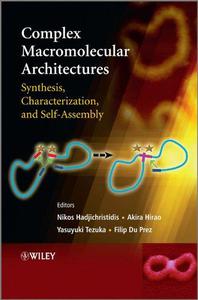
Complex Macromolecular Architectures: Synthesis, Characterization, and Self-Assembly By
2011 | 834 Pages | ISBN: 0470825138 | PDF | 110 MB
The field of CMA (complex macromolecular architecture) stands at the cutting edge of materials science, and has been a locus of intense research activity in recent years. This book gives an extensive description of the synthesis, characterization, and self-assembly of recently-developed advanced architectural materials with a number of potential applications. The architectural polymers, including bio-conjugated hybrid polymers with poly(amino acid)s and gluco-polymers, star-branched and dendrimer-like hyperbranched polymers, cyclic polymers, dendrigraft polymers, rod-coil and helix-coil block copolymers, are introduced chapter by chapter in the book. In particular, the book also emphasizes the topic of synthetic breakthroughs by living/controlled polymerization since 2000. Furthermore, renowned authors contribute on special topics such as helical polyisocyanates, metallopolymers, stereospecific polymers, hydrogen-bonded supramolecular polymers, conjugated polymers, and polyrotaxanes, which have attracted considerable interest as novel polymer materials with potential future applications. In addition, recent advances in reactive blending achieved with well-defined end-functionalized polymers are discussed from an industrial point of view. Topics on polymer-based nanotechnologies, including self-assembled architectures and suprastructures, nano-structured materials and devices, nanofabrication, surface nanostructures, and their AFM imaging analysis of hetero-phased polymers are also included. Provides comprehensive coverage of recently developed advanced architectural materialsContent: Chapter 1 Cyclic and Multicyclic Topological Polymers (pages 1-19): Takuya Yamamoto and Yasuyuki TezukaChapter 2 Ultrarapid Approaches to Mild Macromolecular Conjugation (pages 21-52): Andrew J. Inglis and Christopher Barner?KowollikChapter 3 Synthesis and Self?Assembly of Hydrogen?Bonded Supramolecular Polymers (pages 53-95): Wolfgang H. Binder, Claudia Enders, Florian Herbst and Katharina HackethalChapter 4 Recent Synthetic Developments in Miktoarm Star Polymers with More than Three Different Arms (pages 97-132): Akira Hirao, Mayumi Hayashi, Tomoya Higashihara and Nikos HadjichristidisChapter 5 Precise Synthesis of Dendrimer?Like Star?Branched Polymers, a New Class of Well?Defined Hyperbranched Polymers (pages 133-167): Hee?Soo Yoo and Akira HiraoChapter 6 Arborescent Polymers with a Mesoscopic Scale (pages 169-194): Toufic Nabil Aridi and Mario GauthierChapter 7 Hyperbranched Glyco?Conjugated Polymers (pages 195-227): Toshifumi Satoh and Toyoji KakuchiChapter 8 Highly Branched Functional Polymer Architectures by Click?Chemistry Strategies (pages 229-265): Mieke Lammens and Filip Du PrezChapter 9 Living Alkene Polymerization for Polyolefin Architectures (pages 267-316): Amelia M. Anderson?Wile, Joseph B. Edson and Geoffrey W. CoatesChapter 10 Precision Polyolefins (pages 317-347): Erik B. Berda and Kenneth B. WagenerChapter 11 Polyhomologation: The Living Polymerization of Ylides (pages 349-376): Jun Luo and Kenneth J. SheaChapter 12 Phenylenevinylene Homopolymers and Block Copolymers via Ring?Opening Metathesis Polymerization (pages 377-393): Chin?Yang Yu and Michael L. TurnerChapter 13 Block Copolymers Containing Rod Segments (pages 395-429): Tomoya Higashihara and Mitsuru UedaChapter 14 Synthesis of Well?Defined Poly(meth)acrylamides with Varied Stereoregularity by Living Anionic Polymerization (pages 431-460): Takashi IshizoneChapter 15 Complex Macromolecular Chimeras (pages 461-489): Hermis Iatrou, Marinos Pitsikalis, Georgios Sakellariou and Nikos HadjichristidisChapter 16 Self?Assembly and Applications of Polyferrocenylsilane Block Copolymers (pages 491-526): George R. Whittell, Jessica Gwyther, David A. Rider and Ian MannersChapter 17 Functional Polymeric Nanostructures Prepared by Self?Assembly and Beyond (pages 527-567): Rachel K. O'ReillyChapter 18 Morphologies of Block and Star?Branched Polymers with Three Components (pages 569-591): Hirokazu HasegawaChapter 19 Morphologies and Photophysical Properties of Conjugated Rod-Coil Block Copolymers (pages 593-622): Chi?Ching Kuo, Cheng?Liang Liu and Wen?Chang ChenChapter 20 Bulk Self?Assembly of Linear Hybrid Polypeptide?Based Diblock and Triblock Copolymers (pages 623-645): Sebastien LecommandouxChapter 21 AFM Study of Comb (Co)Polymers with Complex Chain Architecture (pages 647-683): Michel Schappacher and Alain DeffieuxChapter 22 Tunable Thermoresponsive Polymers by Molecular Design (pages 685-715): Richard HoogenboomChapter 23 Fluorine?Containing Block Copolymers: Synthesis and Application as a Template for Nanocellular and Porous Structures Using Supercritical Carbon Dioxide (pages 717-737): Hideaki Yokoyama and Kenji SugiyamaChapter 24 Architectural Polymers, Nanostructures, and Hierarchical Structures from Block Copolymers (pages 739-761): Ian Wyman and Guojun LiuChapter 25 Block Copolymer Nanostructured Thin Films for Advanced Patterning (pages 763-790): Michelle A. Chavis, Evan L. Schwartz and Christopher K. OberChapter 26 Ring Polymers: Effective Isolation and Unique Properties (pages 791-821): Haskell W. Beckham
E-Books → Compendium of Organic Synthetic Methods, Volume 8
Published by: voska89 on 3-08-2022, 23:23 |  0
0
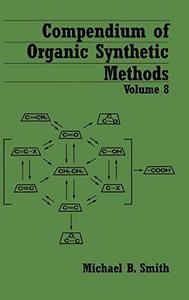
Compendium of Organic Synthetic Methods, Volume 8 By
1995 | 648 Pages | ISBN: 0471573191 | PDF | 25 MB
More than a one-volume listing of synthetic methods, Compendium of Organic Synthetic Methods offers chemists a highly focused and selective look at several thousand functional group transformations. Used by more professionals than any comparable reference on the market, this valuable desktop resource provides quick access to the recipes of the newest, most useful reactions and transformations. It also affords professionals an unparalleled opportunity to browse the vast body of recent literature for new reactions and transformations that may be of interest. Featuring 1,200 more entries than its predecessor, Volume 8 covers functional group transformations and carbon-carbon bond forming reactions appearing in the literature from 1990 through 1992. It presents approximately 1,400 examples of published reactions for the preparation of monofunctional compounds and approximately 1,640 examples of reactions that prepare difunctional compounds with various functional groups. It also features 60 more reviews than Volume 7. As in all the previous Compendium volumes, the classification schemes used allow for quick and easy reference and information retrieval. Chemical transformations are classified first by the reacting functional group of the starting material and then by the functional group formed. The transformation, major reagents that effect the transformation, yield percentage, and stereochemistry are all clearly shown. The Compendium also includes indices for both monofunctional and difunctional compounds as an efficient means of guiding you to specific classes of transformations. Compendium of Organic Synthetic Methods, Volume 8 provides professional chemists and students unparalleled access to the wealth of methods, reactions, and transformations in contemporary organic chemistry.Content:
E-Books → Comparing Clinical Measurement Methods A Practical Guide
Published by: voska89 on 3-08-2022, 23:23 |  0
0
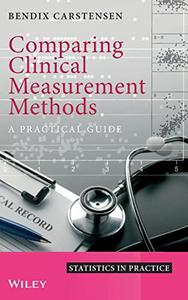
Comparing Clinical Measurement Methods: A Practical Guide By Bendix Carstensen(auth.)
2010 | 166 Pages | ISBN: 0470694238 | PDF | 3 MB
This book provides a practical guide to analysis of simple and complex method comparison data, using Stata, SAS and R. It takes the classical Limits of Agreement as a starting point, and presents it in a proper statistical framework. The model serves as a reference for reporting sources of variation and for providing conversion equations and Descriptions between methods for practical use, including prediction uncertainty. Presents a modeling framework for analysis of data and reporting of results from comparing measurements from different clinical centers and/or different methods. Provides the practical tools for analyzing method comparison studies along with guidance on what to report and how to plan comparison studies and advice on appropriate software. Illustrated throughout with computer examples in R. Supported by a supplementary website hosting an R-package that performs the major part of the analyses needed in the area. Examples in SAS and Stata for the most common situations are also provided. Written by an acknowledged expert on the subject, with a long standing experience as a biostatistician in a clinical environment and a track record of delivering training on the subject. Biostatisticians, clinicians, medical researchers and practitioners involved in research and analysis of measurement methods and laboratory investigations will benefit from this book. Students of statistics, biostatistics, and the chemical sciences will also find this book useful.Content: Chapter 1 Introduction (pages 1-3): Chapter 2 Method Comparisons (pages 5-15): Chapter 3 Howto... (pages 17-20): Chapter 4 Two Methods with a Single Measurement on Each (pages 21-47): Chapter 5 Replicate Measurements (pages 49-65): Chapter 6 Several Methods of Measurement (pages 67-69): Chapter 7 A General Model for Method Comparisons (pages 71-97): Chapter 8 Transformation of Measurements (pages 99-106): Chapter 9 Repeatability, Reproducibility and Coefficient of Variation (pages 107-114): Chapter 10 Measures of Association and Agreement (pages 115-126): Chapter 11 Design of Method Comparison Studies (pages 127-131): Chapter 12 Examples Using Standard Software (pages 133-147): Chapter 13 The MethComp Package for R (pages 149-152):
E-Books → Comparative Pharmacokinetics Principles, Techniques, and Applications, Second Edition
Published by: voska89 on 3-08-2022, 23:23 |  0
0
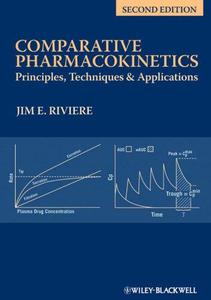
Comparative Pharmacokinetics: Principles, Techniques, and Applications, Second Edition By Jim E. Riviere(auth.)
2011 | 442 Pages | ISBN: 0813829933 | PDF | 7 MB
Now in a revised edition, Comparative Pharmacokinetics: Principles, Techniques, and Applications presents the principles and techniques of comparative and veterinary pharmacokinetics in a detailed yet practical manner. Developed as a tool for ensuring that pharmacokinetics studies are properly designed and correctly interpreted, the book provides complete coverage of the conceptual basis of pharmacokinetics as used for quantifying biological processes from the perspectives of physiology and medicine. New chapters have been added on quantitative structure permeability relationships and bioequivalence, and a number of existing chapters have been significantly revised and expanded to provide a current resource for veterinary and comparative pharmacokinetics.Content: Chapter 1 Introduction (pages 3-11): Chapter 2 Principles of Drug Movement in the Body (pages 13-25): Chapter 3 Quantitative Structure-Permeability Relationships (pages 27-38): Xin?Rui XiaChapter 4 Absorption (pages 39-71): Chapter 5 Distribution (pages 73-90): Jennifer BuurChapter 6 Renal Elimination (pages 91-111): Chapter 7 Hepatic Biotransformation and Biliary Excretion (pages 113-141): Ronald BaynesChapter 8 Compartmental Models (pages 143-186): Chapter 9 Noncompartmental Models (pages 187-206): Chapter 10 Nonlinear Models (pages 207-223): Chapter 11 Physiological Models (pages 225-240): Teresa LeavensChapter 12 Dosage Regimens (pages 241-254): Chapter 13 Simultaneous Pharmacokinetic-Pharmacodynamic Modeling (pages 255-294): Pierre?Louis ToutainChapter 14 Study Design and Data Analysis (pages 295-313): Jason ChittendenChapter 15 Bioequivalence Studies (pages 315-346): Marilyn MartinezChapter 16 Population Pharmacokinetic Models (pages 347-378): Jason ChittendenChapter 17 Dosage Adjustments in Disease States (pages 379-397): Jennifer DavisChapter 18 Interspecies Extrapolations (pages 399-412): Chapter 19 Tissue Residues and Withdrawal Times (pages 413-424):
E-Books → Comparative Diagnostic Pharmacology Clinical and Research Applications in Living-System Models
Published by: voska89 on 3-08-2022, 23:23 |  0
0
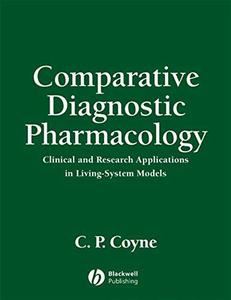
Comparative Diagnostic Pharmacology: Clinical and Research Applications in Living-System Models By C.P. Coyne(auth.)
2006 | 933 Pages | ISBN: 0813817536 | PDF | 8 MB
Comparative Diagnostic Pharmacology: Clinical and Research Applications in Living-System Models is the first evidence-based reference text devoted exclusively to the subject of applying pharmaceutical and biopharmaceutical agents as diagnostic probes in clinical medicine and investigative research.This unique and groundbreaking book is a versatile guide for clinicians and researchers interested in using pharmacologic agents to: Diagnose disease Assess physiological processes Identify the appropriateness of a therapeutic agent Determine appropriate dosing for therapeutic use.Extensively referenced and organized by major body systems, individual topics are listed in an evidence-based format according to specific disease processes or physiological processes of interest. Each entry also includes information on the mechanism of action, administration, and diagnostic interpretation.Descriptions have been provided for the application of diagnostic pharmaceuticals to assess a wide spectrum of diseases and physiological processes relevant to the fields of veterinary and human medicine. Comparative Diagnostic Pharmacology is useful not merely for pharmaceutical-oriented research investigations, but it will also prove invaluable for the monitoring and evaluation of physiological responses and disease processes in animal models.Content: Chapter 1 Cardiovascular System (pages 5-60): Chapter 2 Central Nervous System (pages 61-127): Chapter 3 Endocrine System (pages 129-177): Chapter 4 Gastrointestinal System (pages 179-220): Chapter 5 Hematopoietic System (pages 221-266): Chapter 6 Hepatic System (pages 267-335): Chapter 7 Integumentary System (pages 337-339): Chapter 8 Musculoskeletal System (pages 341-349): Chapter 9 Reproductive System (pages 351-354): Chapter 10 Renal and Urinary Systems (pages 355-373): Chapter 11 Respiratory System (pages 375-403): Chapter 12 Cancer/Neoplastic Disease (pages 407-424): Chapter 13 Genetics and Nucleic Acids (pages 425-438): Chapter 14 Inflammation, Infection, and Sepsis (pages 439-453): Chapter 15 Metabolism, Electrolytes, and Hypoxia (pages 455-470): Chapter 16 Fluorescent and Pigment Dye Reagents (pages 473-516): Chapter 17 Magnetic Resonance Imaging (MRI) (pages 517-567): Chapter 18 Nuclear Planar Scintigraphy (pages 569-675): Chapter 19 Positron Emission Tomography (PET) and Single Photon Emission Computed Tomography (SPECT) (pages 677-729): Chapter 20 Radiographic Image?Enhancing Agents (pages 731-764): Chapter 21 Ultrasonography (pages 765-808): Chapter 22 Biological and Synthetic Delivery Modalities (pages 811-905):
E-Books → Communications, Signal Processing, and Systems
Published by: voska89 on 3-08-2022, 23:22 |  0
0

Communications, Signal Processing, and Systems: Proceedings of the 8th International Conference on Communications, Signal Processing, and Systems by Qilian Liang
English | EPUB | 2020 | 2719 Pages | ISBN : 9811394083 | 291.3 MB
This book brings together papers from the 2019 International Conference on Communications, Signal Processing, and Systems, which was held in Urumqi, China, on July 20-22, 2019. Presenting the latest developments and discussing the interactions and links between these multidisciplinary fields, the book spans topics ranging from communications to signal processing and systems. It is chiefly intended for undergraduate and graduate students in electrical engineering, computer science and mathematics, researchers and engineers from academia and industry, as well as government employees.
E-Books → Commentary on John
Published by: voska89 on 3-08-2022, 23:22 |  0
0

Cyril of Alexandria, Joel C. Elowsky, David R. Maxwell, "Commentary on John"
English | 2013 | pages: 432 | ISBN: 0830829113 | PDF | 8,4 mb
Cyril of Alexandria (ca. 378-444), one of the most brilliant representatives of the Alexandrian theological tradition, is best known for championing the term Theotokos (God-bearer) in opposition to Nestorius of Constantinople. Cyril's great Commentary on John, offered here in the Ancient Christian Text series in two volumes, predates the Nestorian controversy, however, and focuses its theological fire power against Arianism. The commentary, which is addressed to catechists, displays Cyril's breath-taking mastery of the full content of the Bible and his painstaking attention to detail as he seeks to offer practical teaching on the cosmic story of God's salvation.
E-Books → Coming Home Conflict and Return Migration in the Aftermath of Europe's Twentieth-century Civil Wars
Published by: voska89 on 3-08-2022, 23:22 |  0
0

Sharif Gemie, Norry Laporte, Scott Soo, "Coming Home?: Conflict and Return Migration in the Aftermath of Europe's Twentieth-century Civil Wars"
English | 2013 | pages: 247 | ISBN: 1443850411 | PDF | 1,3 mb
The wars of the twentieth century uprooted people on a previously unimaginable scale to the extent that being a refugee became an increasingly widespread experience. With the arrival of refugees, governments of host countries had to mediate between divided national populations: some wished to welcome those arriving in search of refuge; others preferred a strategy of exclusion or even expulsion. At the same time, refugees had to manage conflicts of the self as they responded to the loss of nationhood, families, socio-political networks, material goods, and arguably also a sense of belonging or home. While return migration was usually perceived by governments and refugees alike as the best solution to the dilemmas of forced displacement, consensus about the timing and dynamics of how this would actually occur was very difficult to achieve. In practice, the return of refugees to their countries of origin rarely, if ever, produced a wholly satisfactory outcome. Conflicts clearly resulted in forced displacement, but it is equally true that forced displacement created conflicts. The complex inter-relationship of conflict, return migration and the sometimes chimerical, but still compelling, search for a sense of home is the central preoccupation of the contributors to the two volumes of the Coming Home? series. Scholars from history, literature, cultural studies and sociology explore the tensions between nation-states and migrants as they have anticipated, implemented or challenged the process of return migration during the twentieth and twenty-first centuries. This book begins with Western Europe and progresses to Central and Eastern Europe from the period of the Spanish Civil War to the Cold War era, whilst the second volume - Coming home? Vol. 2: Conflict and Postcolonial Return Migration in the Context of France and North Africa - shifts the focus to the colonial and post-colonial framework of the French-North African nexus. What emerges from the two volumes of essays is that, as ambiguous and sometimes ambivalent as home could appear, it was nonetheless central to migrants' preoccupations about returning.
E-Books → Cognitive Interfaces Constraints on Linking Cognitive Information
Published by: voska89 on 3-08-2022, 23:22 |  0
0

Emile van de Zee, "Cognitive Interfaces: Constraints on Linking Cognitive Information "
English | ISBN: 0198299621 | 2001 | 272 pages | PDF | 1293 KB
This book brings new perspectives to bear on the architecture of the mind and the relationship between language and cognition. It considers how information is linked in the mind between different cognitive and expressive levels - so that people can, for example, talk about what they see and act upon what they hear - and how these linkages are and need to be constrained. The book is concerned in particular with the perception and representation of spatial structure. The authors, all psychologists and linguists, show that insights can be gained from the joint deployment of theoretical linguistic and experimental psychological research and the value of a multi-disciplinary approach to the study of mind, brain, and language.
E-Books → Cognitive Behavioral Therapy and Mindfulness 2 in 1 Bundle
Published by: voska89 on 3-08-2022, 23:22 |  0
0

Cognitive Behavioral Therapy and Mindfulness: 2 in 1 Bundle by Olivia Telford
English | 2021 | ISBN: N/A | ASIN: B08XYDGWF8 | 298 pages | EPUB | 0.56 Mb
Are you struggling to control your overwhelmed state of mind?



